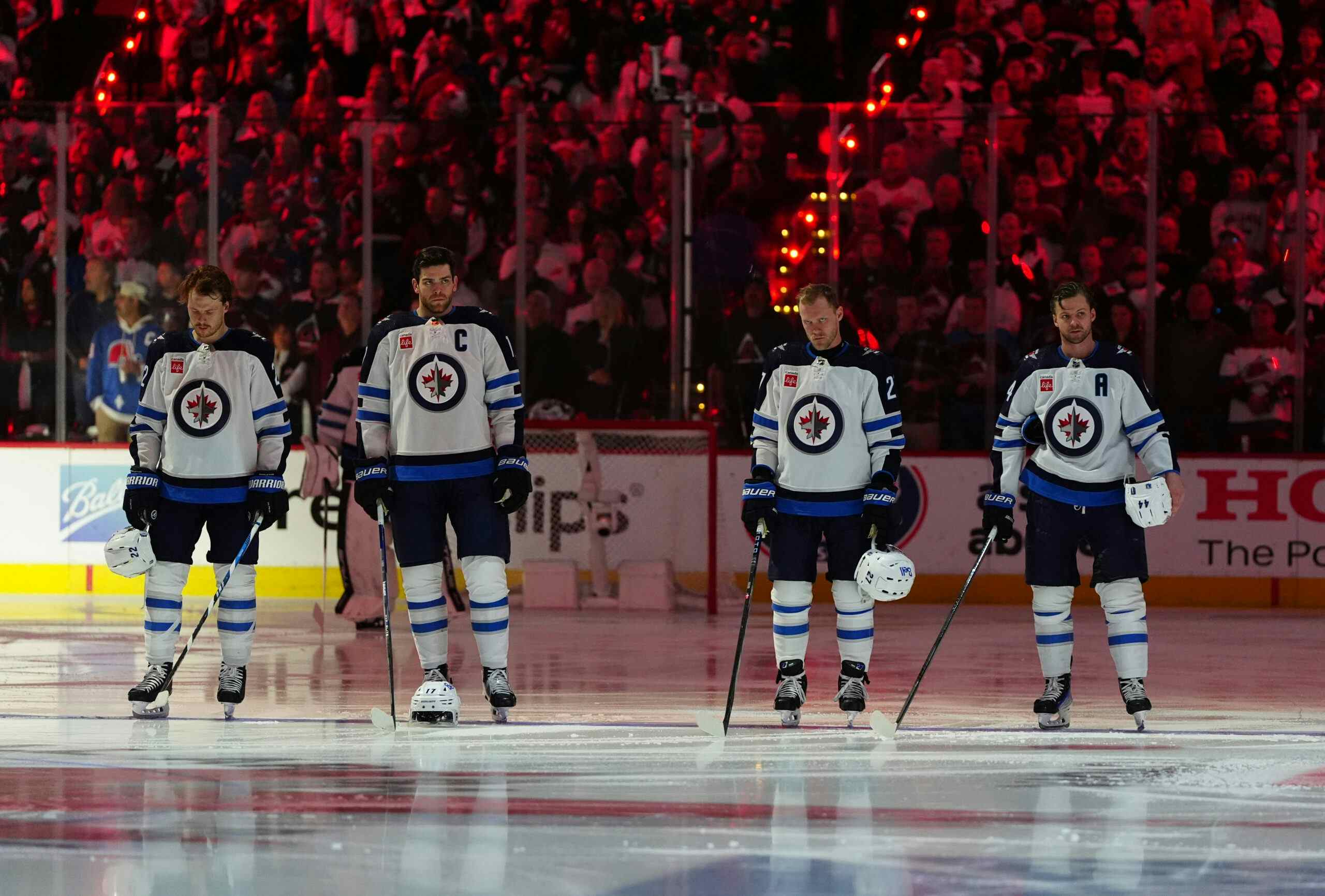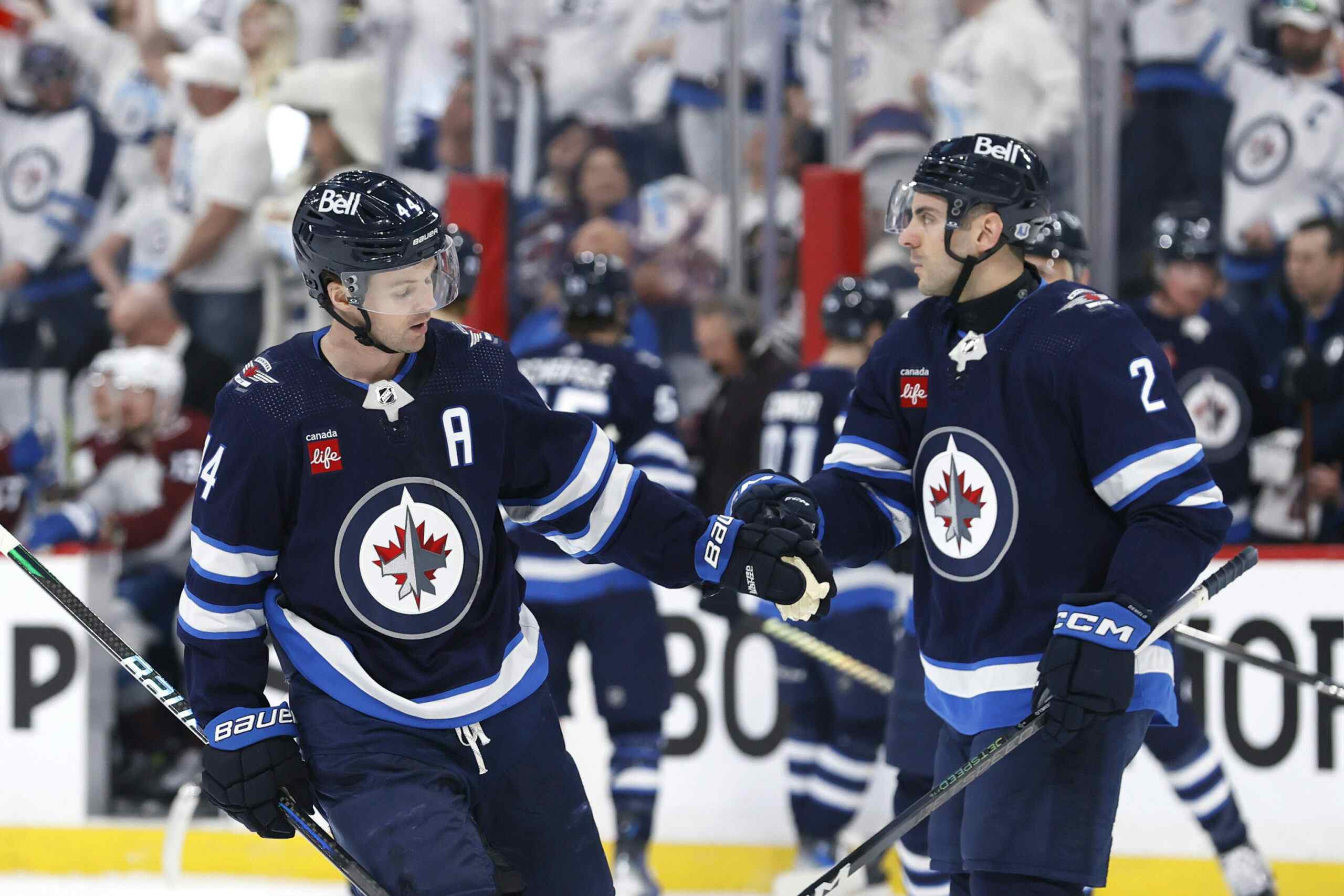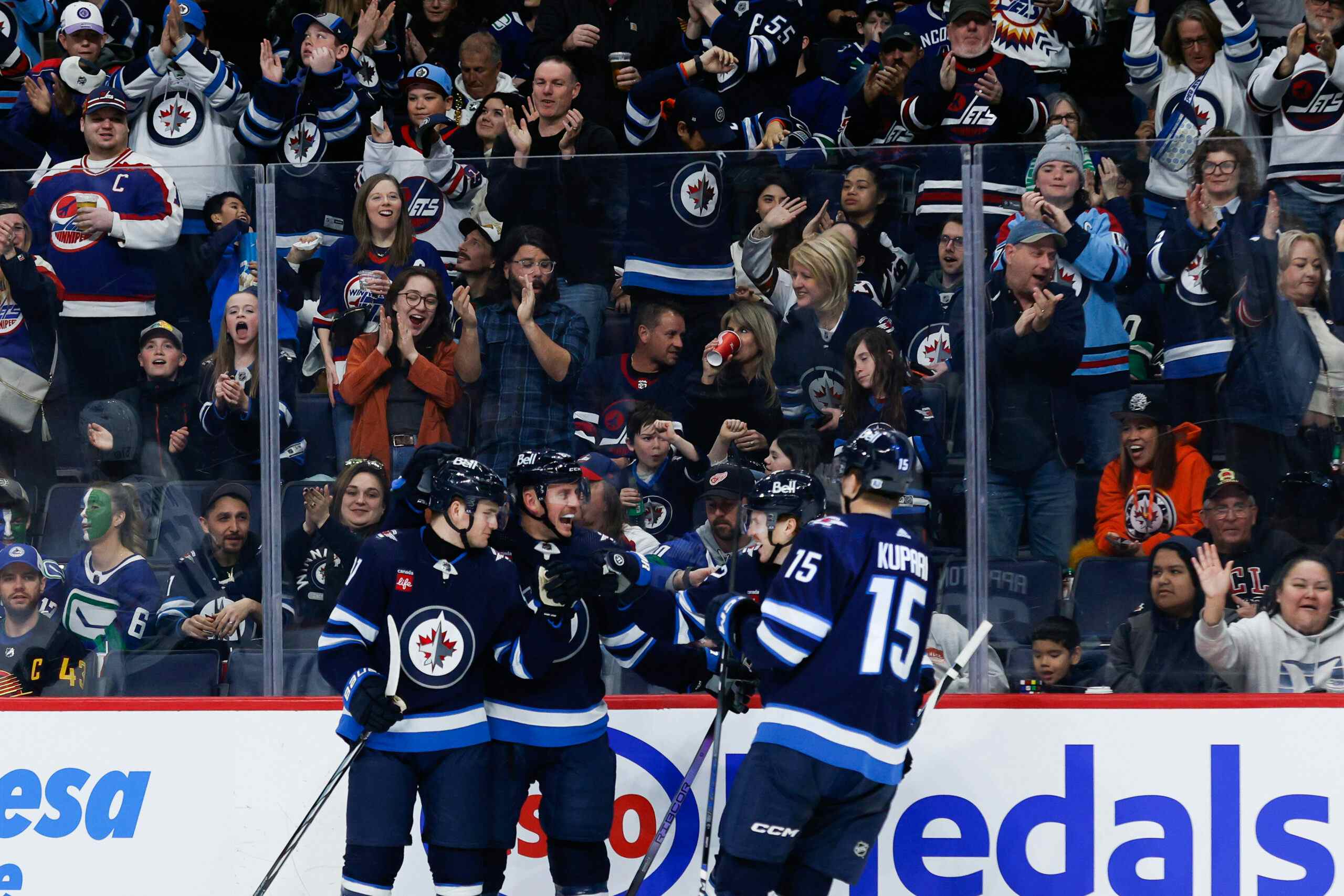Jim Slater and Chris Thorburn: The diminishing returns of impact with lower lines
By Garret Hohl
9 years agoThe Winnipeg Jets have started to get healthy, as Bryan Little and Mathieu Perreault look to make an impact on the Jets final playoff drive.
With players returning from injury, others must take a seat in the pressbox. Liittle and Perreault have caused Matt Halischuk and Eric O`Dell to become scratches.
Meanwhile, the Jets are still playing two marginal hockey players in Jim Slater and Chris Thorburn.
What is the difference in expected impact between these players. Check after the jump.
O`Dell versus Slater
Over the past two seasons Jim Slater has carried a 45.7 Score-Adjusted Corsi percentage and has scored at 0.8 points per sixty minutes in 103 games played. In the other corner is Eric O`Dell, with 52.1 SAC percentage and 1.2 point per sixty pace in 41 games played.
Slater’s Corsi sits just inside the bottom 35 percent in the NHL for fourth line players. His scoring pace is also below the average 1.0 point per sixty pace typical of fourth liners. Meanwhile O`Dell’s Corsi stands in the top 10 percent and his point pace well above average.
The two players differences in Corsi alone suggests that the Jets are more likely to be outscored than outscore with Slater on the ice relative to O`Dell.
There are however usage differences between the two. The on-ice results while impacted by players exist also as a function of the environment a player is exposed to.
Using Steve Burtch’s dCorsi regression, we can compare how either player has performed relative to expectations given their environment.


O`Dell’s Corsi differential being positive and Slater’s negative was expected given their environment, but O`Dell has out performed expectations while Slater has under performed.
What is the estimated impact in terms of goals though?

Looking at just their Corsi percentage relative to fourth line performance, the difference in goal impact over a season between the two players is 2.39 goals. Using Burtch’s dCorsi, their ice time per game, and league average shot attempt shooting percentage, the difference is estimated at 2.83 goals.
Either way the difference is small, although O`Dell also has the added impact of being a better point producer, by about 6 points a season.
What about Slater’s face off acumen? The impact of face offs shows up within Slater’s Corsi. Underlying metrics like Corsi do not show the how’s or why’s, like how face off winning improves shot differentials, but it do show the player’s overall impact on the result when combining all attributes and inputs.
Halischuk versus Thorburn
For on-ice results, the difference between Halischuk and Thorburn is not as stark as the last comparison.
Thorburn has carried a 47.1 SAC percentage and 1.28 points per sixty pace over 130 games, while Hallischuk has posted 47.1 SAC percentage and 1.08 points per sixty over 92 games.


In this case both players have carried a rather substantial negative impact on Corsi.
Using the same methods, we can estimate that impact on a team’s goal differential over a season.

The margins here are even thinner than before. Their Corsi percentage is nearly identical and estimates no difference in impact. Their dCorsi estimates only about 1.4 goal difference over the entirety of a season.
On “Intangibles”, “Moneypuck” and Diminishing Returns
Overall the margins in improvement are small. The gap in talent and impact between O`Dell and Slater is nearly as far as it gets for a fourth line forward. The end season impact though is not that large.
Fourth line forwards typically are the team’s worst players in terms of talent, and coaches know this. They play extremely limited minutes and usually in lower win-probability shifting situations. A coach will play a team’s bottom forwards far more often with a substantial lead than when the game is close.
This is why latent variables, often misclassified as intangibles, mater more for bottom or “role players” more than a team’s top players.
The low ice time and deployment usage limits the distribution of on-ice performance impacts wins, and therefore relatively increases how much impact team-improving factors such as leadership or moral carry.
During the MIT Sloan Sports and Analytics Conference, Tyler Dellow made an interesting statement. Coaches and management for the most part are not stupid people. They want and look for the same things that analysts do, wins, and there are reasons why they make the decisions they do.
When a coach chooses a less talented player like Jim Slater over Eric O`Dell, it is not without reason. We can guess that it likely has to do with Paul Maurice assuming that Slater’s impact through latent variables outweighs his on-ice impact.
It is a completely understandable and logical assumption to make by a rational and win-interested human to make.
Still, there is the caveat that the coach or manager may be assuming wrongfully. We know that latent variables must have an impact on the game. It makes sense that they do and there is empirical evidence in workplace sociology studies.
We do not know though the extent of that impact and how accurate we are in guessing it.
All numbers used are from War-on-Ice for 2013-15 seasons unless otherwise stated.
Recent articles from Garret Hohl





